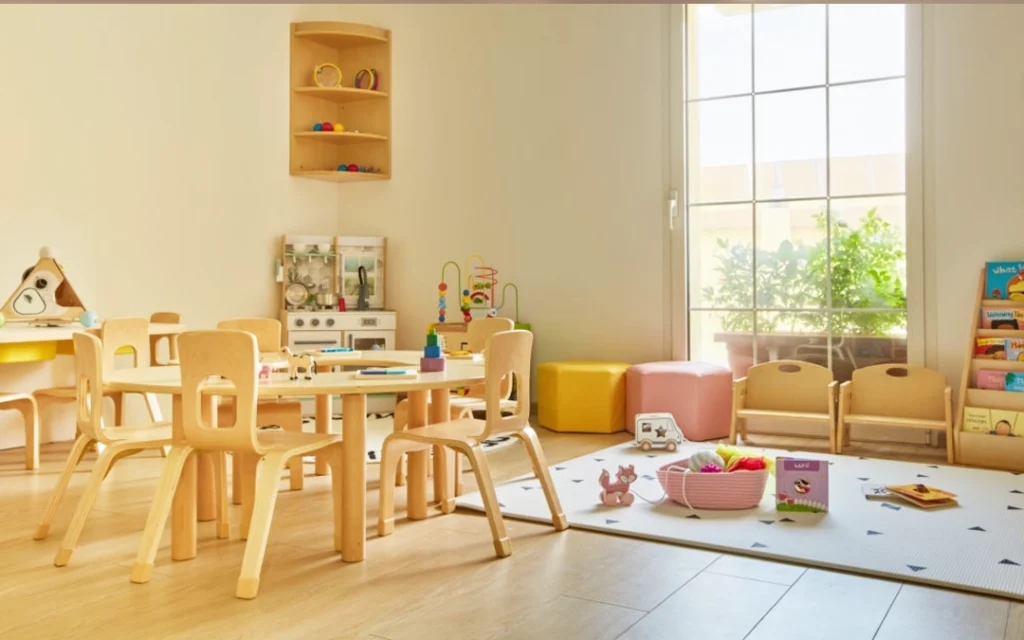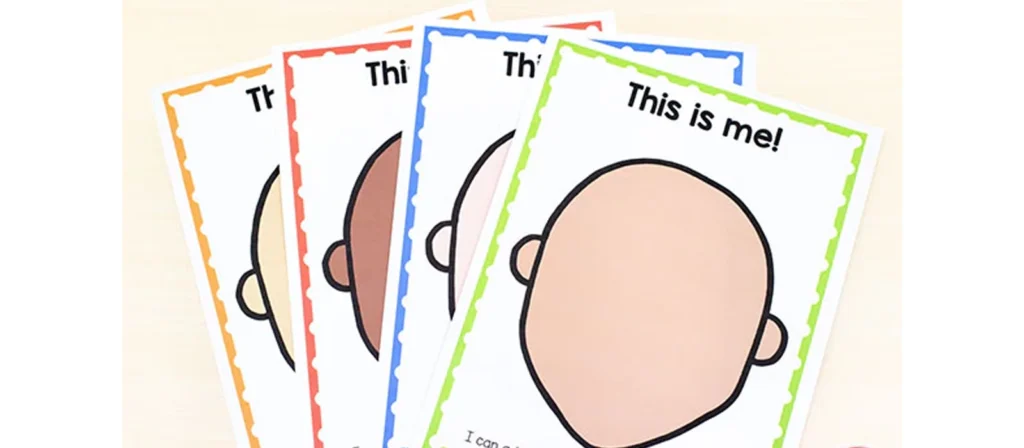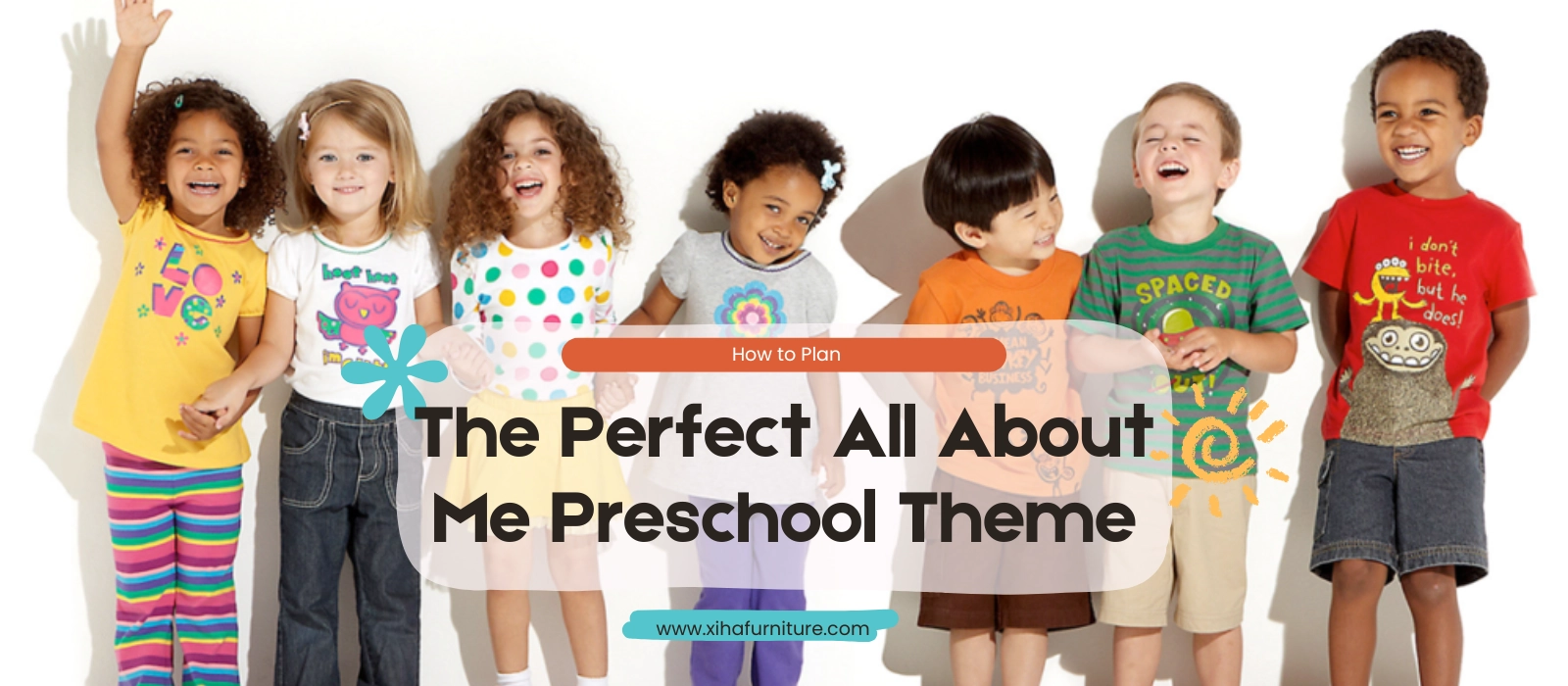What makes an all about me preschool theme such a powerful tool for early childhood educators? Why is it often the very first unit used at the start of a new preschool year? How can we design this theme to both support learning goals and truly engage children from day one?
The all about me preschool theme is absolutely essential for creating a welcoming, emotionally supportive classroom. It encourages every child to express themselves, helps teachers build meaningful connections, and gives structure to the first few weeks of school through personalized, joyful learning.
Every child wants to feel seen, valued, and safe—especially when entering a new environment like preschool. The all about me preschool theme gives each child a chance to take center stage, share their world, and understand their peers. It’s also a perfect opportunity for teachers to observe children’s personalities, interests, and communication styles. From self-portraits and family drawings to name games and identity crafts, an all about me preschool plan can be filled with playful yet meaningful activities. These early explorations help children form strong classroom bonds while also helping teachers lay the groundwork for personalized learning throughout the year.
So in this guide, I’ll walk you through how to plan a thoughtful, engaging, and developmentally appropriate all about me preschool theme—whether you’re running a single classroom or furnishing multiple kindergartens like many of our clients. As the CEO of XIHA Furniture, I’ve helped thousands of kindergartens worldwide set up their spaces and select the right preschool furniture to support this theme and others.
Key Components of a Successful All About Me Preschool Plan
Focus Areas of the Theme
A well-rounded all about me preschool plan typically covers these major topics:
- My name and what it means
- My family and people who care for me
- My favorite things (food, colors, toys)
- My feelings and how to express them
- My body and how to take care of it
- Where I live or where I’m from
Each area should be explored through both structured and open-ended activities, allowing children to express themselves freely while reinforcing key developmental goals.
Suggested Weekly Planning Breakdown
An effective all about me preschool theme plan is typically spread out over one or two weeks. Here’s a sample one-week layout:
- Day 1: My Name and Me – Name songs, tracing/writing name, name puzzles
- Day 2: My Family – Family photo sharing, drawing our homes
- Day 3: My Feelings – Emotion cards, mirror play, feelings chart
- Day 4: My Body – Body part games, healthy habits, movement songs
- Day 5: My Favorites – Show-and-tell, favorite foods collage, class survey
Each day introduces a new layer of self-awareness and helps students build trust and comfort within the classroom.
Activities That Work Best
Hands-on activities make the theme come to life. Consider these options:
- Self-portraits using crayons or mirrors
- “Me bags” children fill with 3 favorite items from home
- All About Me books or posters
- Role-playing games with family dolls or puppets
- Feelings bingo and mood wheels
These activities not only boost creativity but also promote oral language development and social interaction.
Visual Displays and Documentation
One of the most important components of this theme is documentation. Displaying children’s work on classroom walls shows them that their identity matters. Create a special “All About Us” wall where each child’s photo, drawing, or story is showcased. Parents can also contribute by sending in family photos or small keepsakes.
In the following section, we’ll look at how to adapt your classroom space to support the all about me preschool theme visually and functionally.
How to Set Up Your All About Me Preschool Space
Why Environment Matters
The physical setup of a classroom is not just about aesthetics—it plays a direct role in how children feel and learn. For an all about me preschool theme, your environment should echo the theme’s message: every child matters. From the entrance to the learning corners, the classroom should celebrate individuality, promote safety, and support exploration. A cozy, inviting space helps children feel at home, making it easier for them to engage with self-expression activities.

Structuring the Classroom with Purposeful Zones
Designing learning areas around specific functions can help reinforce the all about me preschool theme. Each zone should support identity-building, self-expression, and independence:
- Welcome Area: Post names and photos of each child for recognition and belonging.
- Art Center: Focused on self-portraits, drawings of families, and favorite things.
- Book Nook: Stocked with stories about emotions, diversity, and families.
- Mirror Station: Encourages children to observe facial features and body parts while talking about feelings.
- Writing Corner: Equipped with tracing sheets and journals for children to share their personal stories.
All materials should be accessible to children, reinforcing their autonomy. Use child-sized furniture, open shelves, flexible seating, and clearly labeled storage to promote both order and choice.
Using Visual Elements to Personalize the Space
Once the zones are in place, use classroom visuals to personalize and reinforce the all about me preschool theme. These visual tools serve as both teaching aids and affirmations of identity:
- Create an “All About Us” bulletin board with photos and profiles.
- Display family photo trees or collage walls.
- Post emotion charts that reflect children’s daily moods.
- Hang name recognition charts or custom name tags.
- Highlight children’s drawings of their homes, families, and favorites.
These visuals are more than decoration—they are reflective tools that help children feel visible and celebrated in the learning space.
The Role of Furniture in Supporting Learning
Furniture choices can either support or disrupt your teaching goals. For an all about me preschool theme, you want to create comfortable zones that invite discussion, play, and creativity. Low tables, group seating arrangements, and cozy nooks can encourage collaboration and storytelling. Soft seating options can be used in reading corners or emotional regulation spaces.
As a factory-direct supplier, we at XIHA Furniture always recommend versatile, easy-to-clean, and safe materials. Our modular tables and chairs, for example, can be arranged in clusters for group work or separated for quiet time. Many of our clients also use our family-themed role play stations, which integrate well into the all about me preschool theme.
In the next section, I’ll walk you through how to choose specific preschool furniture pieces that align with this theme while also maximizing space, safety, and budget.
All About Me Preschool Activities That Actually Work
A well-executed all about me preschool theme combines theoretical foundations with practical, hands-on exploration. The activities in this section are rooted in key early childhood education principles: identity formation, emotional literacy, and social-emotional development. When children are offered diverse ways to express who they are—through art, music, language, and play—they develop a deeper sense of self and belonging.
Below is a list of 10 carefully designed and developmentally appropriate activities that not only support those goals but also align with the structure and flow of a real preschool classroom. Each includes tips for setup, observation, and how to extend the learning.

1. Self-Portrait Drawing
Objective: Build self-awareness and fine motor skills
Materials: Hand mirrors, crayons, markers, skin-tone pencils, paper
How-to: Children observe their reflection and draw their face. Teachers can prompt with questions like “What color are your eyes?” or “How do you feel today?”
Teacher Tip: Compare portraits at the start and end of the theme to show growth in confidence and detail.

2. My Family Tree
Objective: Explore family structure and relationships
Materials: Tree templates, family photo printouts, glue sticks
How-to: Help children add family members to their “tree” through photos or drawings.
Extension Idea: Use different types of “trees” to represent diverse family structures: circles for blended families, houses for extended families, etc.
3. Name Puzzle
Objective: Letter recognition and cognitive sequencing
Materials: Cardstock, scissors, envelopes for storage
How-to: Write each child’s name, cut it into individual letters, and let them reconstruct it.
Observation Note: Teachers can document how children identify and arrange letters over time.
4. Feelings Wheel
Objective: Promote emotional vocabulary and self-regulation
Materials: Paper plates, brads, markers, facial expression images
How-to: Children create rotating wheels with faces and emotion labels. They can point to how they feel during morning circle.
Home Link: Send a smaller version home for parents to use in daily check-ins.
5. My Favorites Cards
Objective: Self-expression and verbal communication
Materials: Index cards, magazines, glue, crayons
How-to: Children create a deck of “favorite” cards—food, color, animal, activity, toy.
Discussion Prompt: Pair children to compare their cards and discover similarities.
6. Family Show & Tell
Objective: Strengthen home-school connection
Materials: Personal items or photos from home
How-to: Children bring in a special item from home to present to the class.
Teacher Role: Facilitate respectful listening and inclusive language among peers.
7. Who Am I? Game
Objective: Memory, listening, and empathy
Materials: Pre-written clues about children’s traits or favorites
How-to: Read clues aloud (“This friend loves spaghetti and has a baby sister…”), classmates guess who it is.
Variation: Let older children write their own clues.
8. Mirror Dance
Objective: Physical coordination and social bonding
Materials: Open space, quiet background music (optional)
How-to: In pairs, one child leads movement while the other mirrors. Then switch.
Reflection Time: Discuss how it feels to be a leader and a follower.
9. This Is Me Worksheet
Objective: Document personal information for identity-building
Materials: Printable template with sections for name, age, favorite color, drawing space, and handprint
How-to: Complete one at the start of the theme, then revisit later to update or add more details.
Display Idea: Post worksheets on a wall titled “All About Our Class.”
10. Fingerprint Poster
Objective: Celebrate uniqueness within the group
Materials: Washable ink pads, poster board
How-to: Each child presses their finger on the board and writes their name under it.
Class Message: “We are all different, and we all belong.”
These all about me preschool activities are more than just fun—they are a framework for discovery, confidence-building, and classroom unity. Implementing them with intention helps children feel not only seen, but truly known.
In the next section, we’ll explore some common mistakes to avoid when planning this theme, and how to make sure every activity stays purposeful and inclusive.
Conclusion
The all about me preschool theme is more than a fun introduction to the school year—it’s a transformative foundation for identity development, emotional connection, and classroom culture. When thoughtfully executed, it helps every child feel seen, valued, and celebrated for who they are.
By designing activities that meet diverse developmental needs, involving families meaningfully, and creating safe, flexible learning environments, educators can unlock powerful learning moments. From self-portraits to storytelling, every child’s voice matters—and every child deserves a space to express it.
At XIHA Furniture, we believe early learning spaces should reflect the beauty and individuality of the children who learn within them. That’s why we design our preschool furniture to support not just education, but also inclusion, creativity, and connection. Whether you’re launching a new kindergarten, expanding a preschool group, or planning your first themed classroom, we’re here to help.
Let’s build spaces that help every child say proudly: “This is me.”



